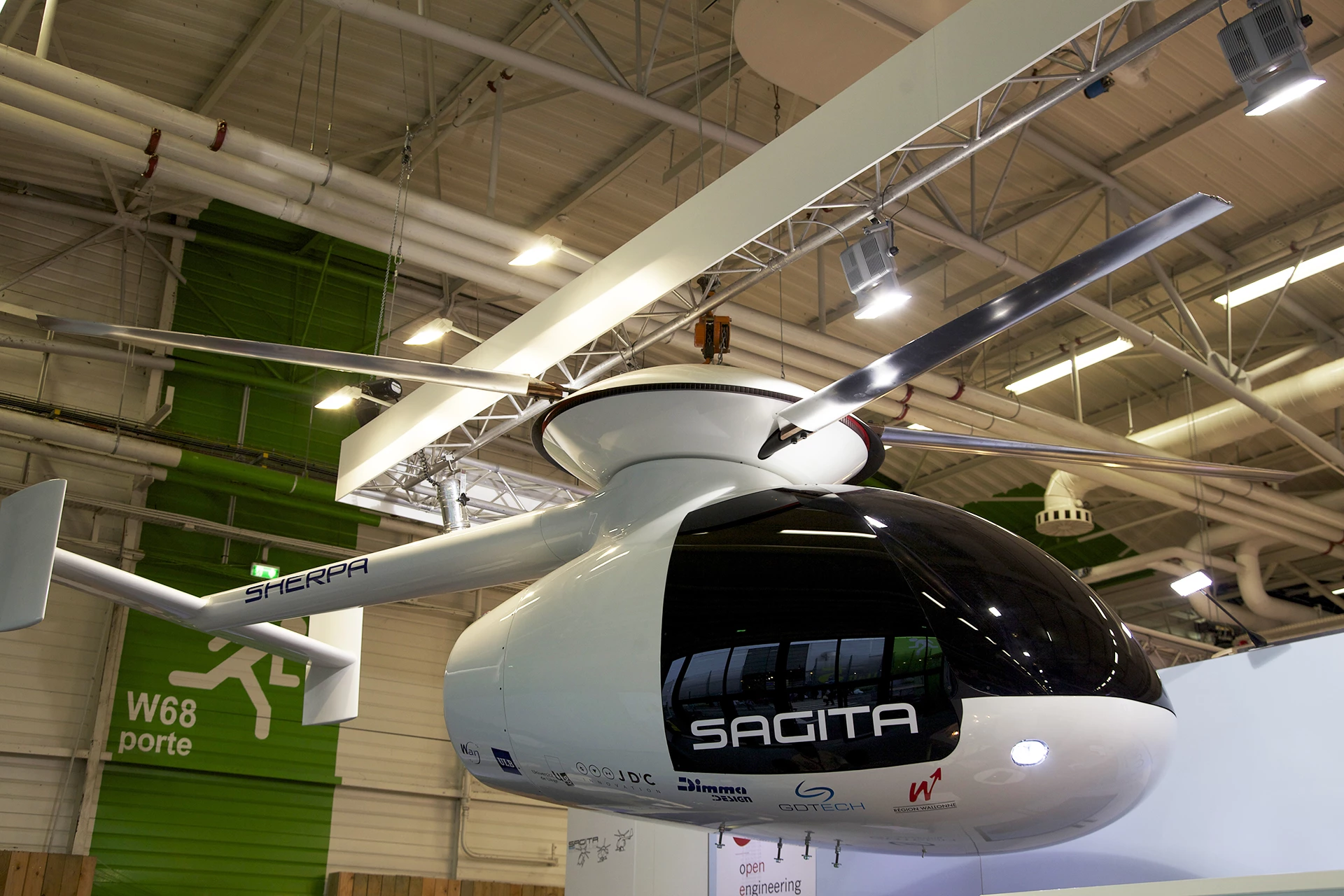Certainly one of the more intriguing things on display at this year's Paris Air Show, the Sherpa by Belgian startup Sagita aims to make the helicopter simpler, more efficient, more reliable and more affordable. The helicopter's rotors are directly driven by turbines which are themselves powered by hot air and fumes from the helicopter's power plant. Sagita claims that this makes the the aircraft approximately 85 percent efficient while doing away with the need for a tail rotor.
The Sherpa's propulsion system bears explaining a little more fully. Rather than driving the rotors directly, the Sherpa's engine instead powers a compressor with an air intake at the rear of the helicopter. That compressor feeds some of its air to the engine to aid combustion, while the rest draws heat from the Sherpa's cooling system before being mixed with engine exhaust fumes to heat the air to 100º C (212º F). The compressed hot air drives two turbines which directly drive the Sherpa's two contra-rotating rotors.
Sagita claims that no additional cooling measures are required, and that because fewer moving parts are needed overall, maintenance is reduced.
The two-seater's distinctive bullet-shaped fuselage comes as a result of the air intake to the rear, needed to supply the compressor with air. The cockpit is about 1.45 m (4.8 ft) wide and 1.26 m (4.1 ft) high. The Sherpa's nose-to-tail length, excluding rotors, is just under 4.8 m (15.8 ft).
The 1:1 scale Sherpa on show in Paris is just a model, and at this stage the helicopter's performance is theoretical. However, Sagita says that the 260 kg (573 lb) helicopter can lift an additional 171 kg (377 lb) of load. It has an expected cruise speed of 158 km/h (85 knots), range of 400 km (250 miles) and a maximum flight time of 3 hours. Its ceiling is 2,000 m (6,600 ft).
Talking to Gizmag in Paris, Sherpa inventor and Sagita Director, Hubert Antoine, suggested that the technology is applicable to much larger helicopters. He also suggested the Sherpa has the potential to become a UAV platform.
It's hoped that the aircraft, in development since Sagita's founding in 2008, will make its debut flight in 2 years, and go on sale in 3. It's target price is €150,000 (US$200,000).
Though a full-scale working prototype is yet to be built, Sagita claims to have proven the concept (albeit with an electric motor) with a one-fifth scale model. You can see the video of it in flight below.
Source: Sagita










